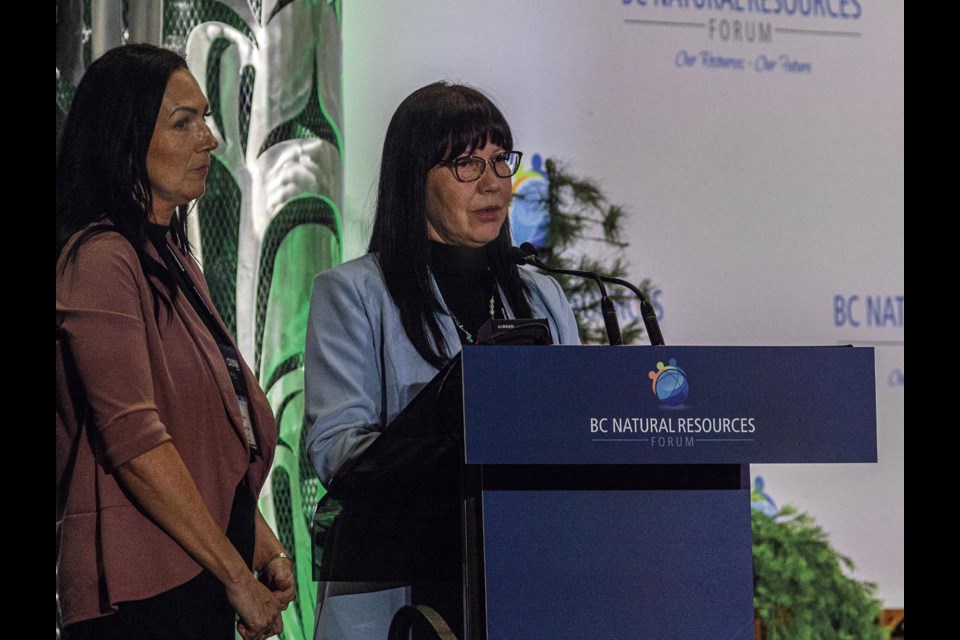The BC Government plans to introduce legislation later this year giving the BC Energy Regulator sole authority to issue the permits needed for the construction of the North Coast transmission line and other major transmission systems.
Premier David Eby made the announcement as the first keynote speaker at the 2025 BC Natural Resources Forum in Prince George Tuesday, Jan. 14, saying that the regulator has a “history of showing success at getting projects moving quickly (and) working in partnership with industry and with First Nations.”
“This will ensure that we build the lines sooner,” the premier said. He later added that this would also help speed up the time it takes for natural resources and provincial critical infrastructure projects to get off the ground as well.
BC Hydro announced its plans to twin its lines from Prince George to Terrace during the 2023 BC Natural Resources Forum, which would add 450 kilometres of 500-kilovolt transmission lines.
It would include a 170-kilometre transmission line from the Williston substation to the Glenannan substation, a 130-km line from Glenannan to the Telkwa substation and another 145-km line from Telkwa to the Skeena substation near Terrace.
Other supporting infrastructure like the installation of fibre optic cable, the expansion of capacitor stations and the improvement of existing substations would also be carried out.
At the time, Hydro CEO Chris O’Riley said the development would support future industrial development along BC’s north coast.
Speaking to The Citizen before the forum kicked off, Eby said expediting the transmission of electricity is key.
On one hand, the premier said, using hydroelectric power instead of diesel or other forms of energy reduces emissions.
“It also reduces costs because our electricity is quite cheap and it makes projects even more successful and profitable and might push some projects that are kind of on the edge into development,” Eby said.
The premier also tied this announcement into his government’s approval of nine wind power projects late last year that are all co-owned by First Nations. Those projects were allowed to bypass the environmental assessment process.
One of those projects is a joint venture between Lheidli T’enneh First Nation and Spanish firm Ecoener to build 18 turbines near Hixon with a generating capacity of 140 megawatts.
Together, Eby said, all nine projects will boost BC’s generating capacity by eight per cent when they come online.
The premier told The Citizen that his government will put out additional calls for power to meet anticipated demand in BC. The eventual goal is to allow for BC to sell power down the west coast of the United States as well as to Alberta and redto uce rates for BC customers.
He said they were allowed to bypass the environmental assessment process because they will help reduce BC’s carbon emissions and they are owned by the communities where they’re located.
However, he said, the rules around mitigating the developments’ impacts on streams, wildlife and other facets of nature will still be enforced.
In a separate interview in Prince George Tuesday, Energy Minister Adrian Dix said that the transmission line and the wind power projects would allow for electricity generated in Northern BC to be used to promote the region’s economic growth.
“It’s a visionary thing that BC Hydro and its partners are doing and it’s critical, I would argue, for the future of the province but we also have to get these things built and that is a key element of my mandate,” Dix said. “It’s why we’ve taken the action on wind power, it’s why we’re taking the action on transmission … to reduce not the effect of regulation or the protection it provides, but the time of it, which is itself a cost to everybody.”
Dix called wind power the “low-cost form of renewable energy” that still has a lot of opportunities left to exploit.


